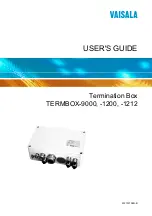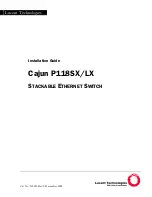
77
Bandwidt
h required
by
primary
CRLSP
Primary
CRLSP
requires
bandwidth
protection or
not
Bypass tunnel providing
bandwidth protection
Bypass tunnel providing no
bandwidth protection
carries the bandwidth protection
flag.
This bypass tunnel is selected
only when no bypass tunnel that
does not provide bandwidth
protection can be bound to the
primary CRLSP.
protection.
Configuration restrictions and guidelines
When you configure a bypass tunnel on the PLR, follow these restrictions and guidelines:
•
Use bypass tunnels to protect only critical interfaces or links when bandwidth is insufficient.
Bypass tunnels are pre-established and require extra bandwidth.
•
Make sure the bandwidth assigned to the bypass tunnel is no less than the total bandwidth
needed by all primary CRLSPs to be protected by the bypass tunnel. Otherwise, some primary
CRLSPs might not be protected by the bypass tunnel.
•
A bypass tunnel typically does not forward data when the primary CRLSP operates correctly.
For a bypass tunnel to also forward data during tunnel protection, you must assign adequate
bandwidth to the bypass tunnel.
•
A bypass tunnel cannot be used for services such as VPN.
•
You cannot configure FRR for a bypass tunnel. A bypass tunnel cannot act as a primary CRLSP.
•
Make sure the protected node or interface is not on the bypass tunnel.
•
After you associate a primary CRLSP that does not require bandwidth protection with a bypass
tunnel that provides bandwidth protection, the primary CRLSP occupies the bandwidth that the
bypass tunnel protects. The bandwidth is protected on a first-come-first-served basis. The
primary CRLSP that needs bandwidth protection cannot preempt the one that does not need
bandwidth protection.
•
After an FRR, the primary CRLSP will be down if you modify the bandwidth that the bypass
tunnel can protect and your modification results in one of the following:
The CT type changes.
The bypass tunnel cannot protect adequate bandwidth as configured.
FRR protection type (whether or not to provide bandwidth protection for the primary
CRLSP) changes.
Manually configuring a bypass tunnel
The bypass tunnel setup method is the same as a normal MPLS TE tunnel. This section describes
only FRR-related configurations.
To configure a bypass tunnel on the PLR:
Step
Command
Remarks
1.
Enter system view.
system-view
N/A
2.
Enter tunnel interface view of
the bypass tunnel.
interface tunnel tunnel-number
[
mode mpls-te
]
N/A
3.
Specify the destination
address of the
bypass
tunnel.
destination ip-address
The bypass tunnel destination
address is the LSR ID of the MP.
















































